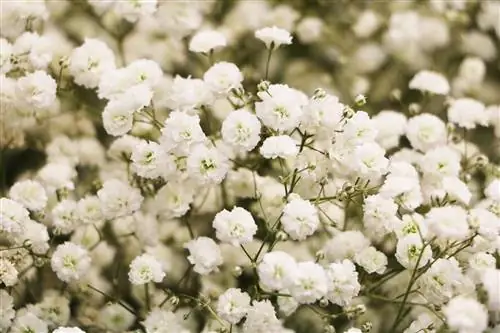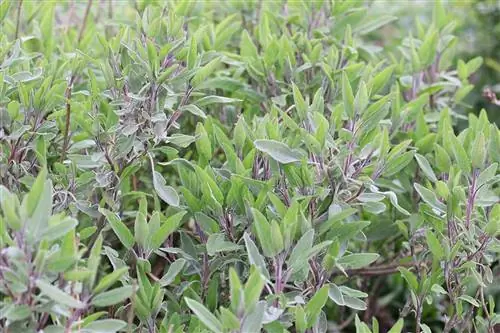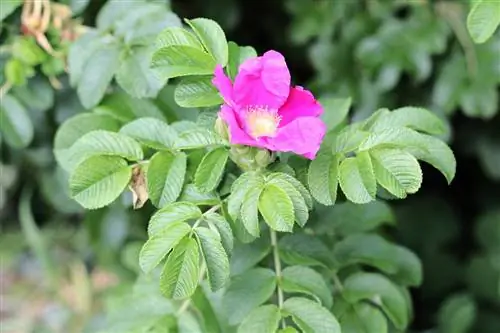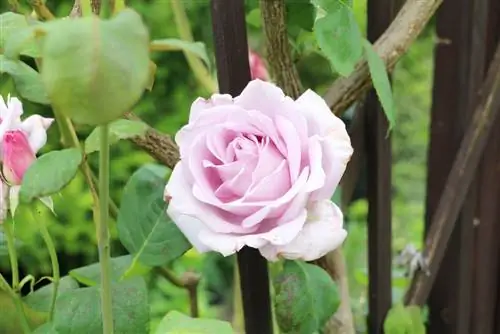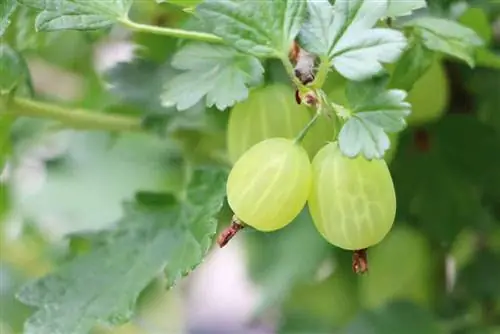- Author admin [email protected].
- Public 2023-12-17 03:39.
- Last modified 2025-01-24 12:45.
Gypsophila is one of the undemanding summer perennials. With its small white or pink colored flowers, which are double or non-double, it blooms for many weeks. Gypsophila doesn't need a lot of care, but with a little work the flowering period can be extended.
Large variety of varieties for different purposes
There are several different varieties of gypsophila. Many of them are hardy and bloom for several years, but annual perennials are also available commercially. In addition to the tall steppe gypsophila (Gypsophila paniculata), which can reach a height of 120 centimeters, there is a creeping variety (Gypsophila repens) that spreads widely and grows to a maximum height of 25 centimeters. Annual varieties such as Gypsophila elegans are particularly suitable as cut flowers or for drying; at 50 centimeters they fit well in bouquets. While the tall varieties of gypsophila look good in a flower bed or border, the slightly lower forms can be used to fill gaps. Creeping forms of gypsophila are best planted in a rock garden. The delicate flowers go particularly well with dark and strong perennials such as delphiniums or lavender. In the rose bed, the delicate plants highlight the roses.
- Steppe Gypsophila, 150 centimeters, for beds and borders
- Creeping gypsophila, 25 centimeters, for the rock garden
- Hybrid forms and annual varieties, 50 centimeters, as gap fillers for empty corners
Grow your own gypsophila
New plants can be grown on the windowsill or in a small greenhouse. The seeds are sown in a planting tray with growing soil. Care should be taken to ensure that the small seeds do not fall too close together so that the seedlings can develop better. They are only lightly covered with soil and kept well moistened until emergence. A spray bottle with a fine jet is best suited for this. The plant bowl is covered and placed in a warm place with plenty of light. To prevent rot or mold, the cover must be removed regularly. After a short time the small plants can be seen. When they have formed four to five leaves, they need to be separated. They are carefully placed individually in small plant pots. If you want to save yourself the trouble of growing your own plants, you can buy pre-grown plants from garden shops. In order for them to grow in the garden, they should not be too small. Dark, slimy spots on the stems indicate stem rot. Such plants should not be purchased.
Sunny, dry location preferred
As soon as it is warm outside and there is no longer any fear of frost, the small gypsophila plants are allowed outside. All gypsophila varieties require a sunny spot and light, not too hard soil. They thrive best when they receive a lot of sun; four hours a day should be enough for beautiful flowers. They can only tolerate moisture to a limited extent; the delicate plants suffer greatly when waterlogged and then tend to rot.
Prepare the planting hole
A hole about 30 centimeters deep is dug at the desired location and filled with some compost soil. Very solid soils can be loosened up with gravel at the bottom hole. The plants are then inserted and carefully surrounded with soil. So the main work is already done. Watering is hardly necessary. Fertilizer applications are only advisable if the soil contains very few nutrients. A little compost sprinkled around the plant is often enough. Gardeners who swear by organic gardening add a little diluted nettle manure as fertilizer at longer intervals. It is a good idea to support the plants before flowering as they easily fall over and lie on the ground. To do this, the stems are protected with small bamboo sticks. Small fences made of chicken wire that are placed around the plant and thus prevent it from falling over have also proven successful. When the gypsophila has faded, it should be trimmed. By cutting off the spent parts of the plant and shortening the plant by a few centimeters, a second flowering period can often be achieved.
- Sunny location
- Light soils
- Water little and protect from moisture
- Protect before flowering
- Prune after flowering
Gypsophila in bouquets, arrangements and as dried flowers
Gypsophila is not only suitable as a cut flower in colorful summer bouquets or in bouquets of roses, it can also be dried excellently and used in dried flower arrangements. With straw flowers or other dried flowers you can create a beautiful floral decoration even in winter. To do this, the herb is cut shortly before the flowers have fully opened. The stems are loosely tied together and hung upside down in a dry, not too bright place.
Interesting facts
Gypsophila can be divided into up to a hundred species that grow from our region to the Mediterranean. They have perennial representatives and also annual family members. The gypsophila seeds that you can purchase from us are usually annual.
In earlier years, a mild detergent was made from the roots of gypsophila. The roots contain all sapions, which are ideal for washing wool. But the roots are also suitable for washing hands and hair. To do this, the roots were dug up and rubbed with a little water between the hands. The roots foam up slightly and clean gently.
Gypsophila was also often used as a medicinal plant in earlier centuries and not just for washing. The active ingredients of gypsophila lie in its diuretic effect. It also promotes the coughing up of mucus in the nose and throat. For this purpose, extracts are and were obtained from the plants.
Gypsophila is sometimes also called gypsum herb because it likes to grow on gypsum rock. In our gardens, gypsophila loves sunny to partially shaded areas. Gypsophila doesn't like a slight thinning and enough water, but no wet feet. It blooms diligently throughout the summer and delights the eye of the beholder.

